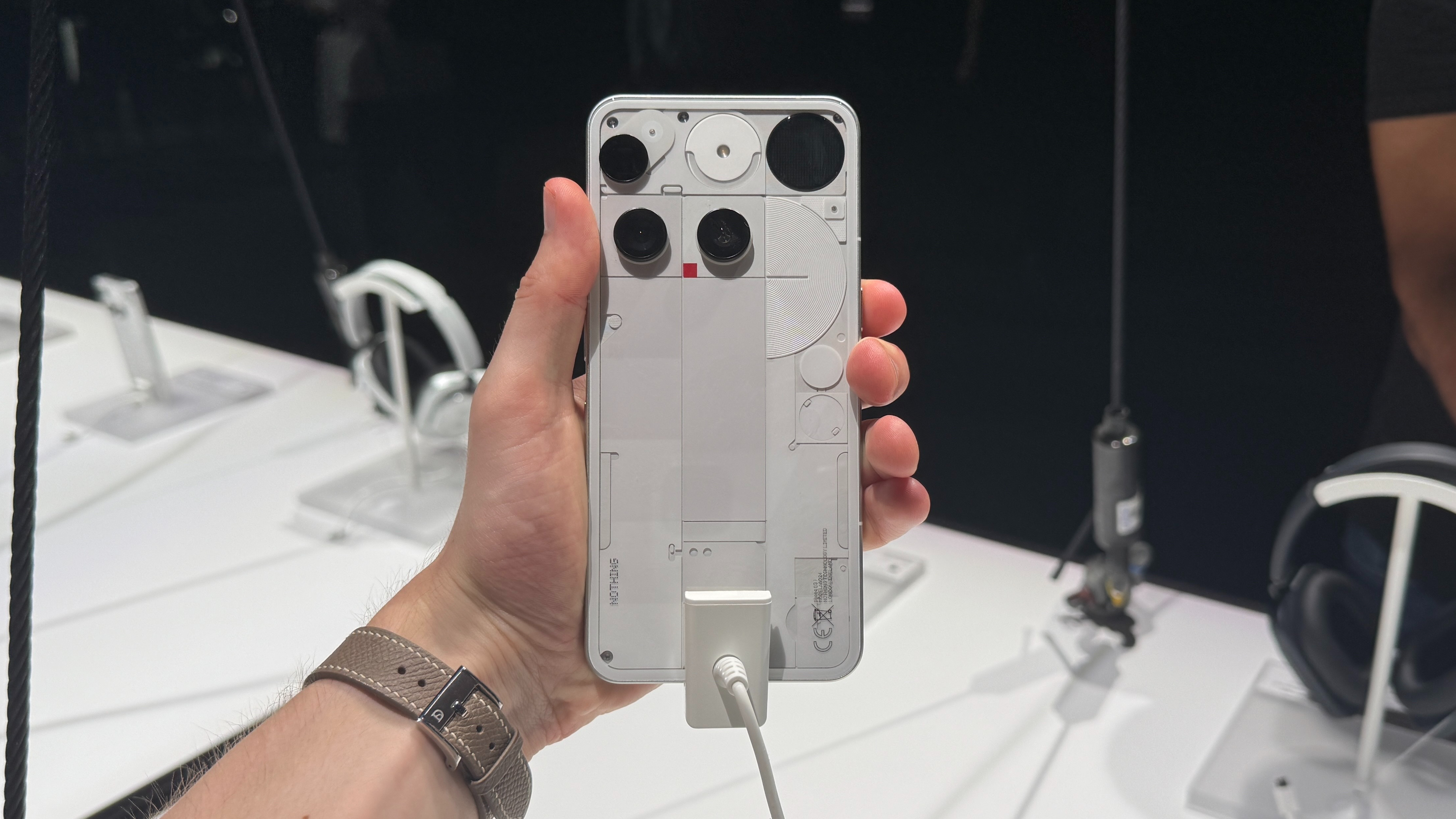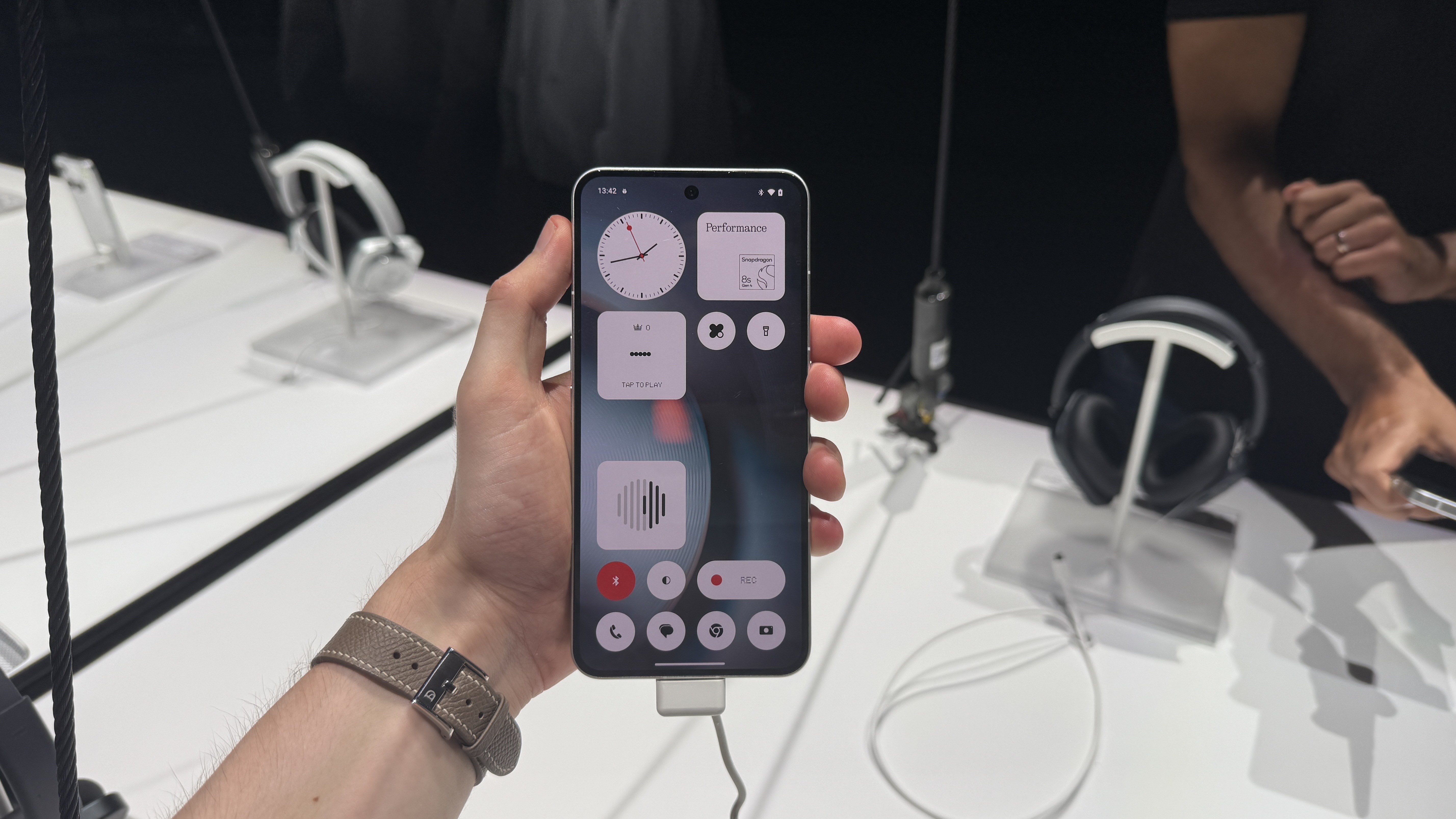‘We're not just chasing whatever competitors are doing’: Nothing’s AI chief explains why the Phone 3 uses the Snapdragon 8s Gen 4, not the 8 Elite

Two weeks ahead of the Nothing Phone 3’s launch on July 1, Nothing announced that its “first true flagship” would be using the Qualcomm Snapdragon 8s Gen 4 chipset, not the Snapdragon 8 Elite, which is by all accounts the fastest Android chipset in 2025.
Negative headlines abounded (“the Nothing Phone 3 chipset has been confirmed and I’m concerned,” wrote Trusted Reviews), but in hindsight, Nothing was smart to clear the decks for a slew of much more positive Phone 3 coverage on launch day.
Does the lack of a Snapdragon 8 Elite in the Phone 3 really matter? Personally, I don’t think so, since we’ve arguably reached a saturation point when it comes to the speed of flagship phones. But now, Nothing itself has shed more light on the decision to opt for the Snapdragon 8s Gen 4 over the Snapdragon 8 Elite.
“From a product perspective, I think we can give the experiences that we want to give with the Snapdragon 8s Gen 4 and [more generally] the spec sheet of the Phone 3,” Nothing’s AI lead, Sélim Benayat, explained to me in an exclusive interview.
“Obviously, it's also helpful from a price perspective [the Phone 3 costs $799 / £799 / AU$1,509]. But generally, we were more focused on what [kind of] experience we wanted to create, and therefore on what specs we needed [to facilitate that experience].”
With the Phone 3, the type of flagship “experience” Nothing wants to create is one that encourages human-centric interaction through both hardware and software. For a separate article, Sélim told me how the new Glyph Matrix display helps users “be more in the present moment,” and Nothing’s approach to AI revolves around the same goal.
“At Nothing, the way we look at AI internally is – we rarely call it AI, but rather a software tool that allows us to make more personal, adaptive features that put you, the human, into the center of the experience,” Sélim explained.
Sign up for breaking news, reviews, opinion, top tech deals, and more.
“Every time there’s a debate over what should be prioritized, we go back to that principle. We're not just chasing whatever competitors are doing – we have this philosophy of, ‘What should the interface between tech and humans look like?’ And that's where we’re ultimately going, because we believe that, at the end of the day, [this approach will result in] features that people actually want to use.”

I asked Sélim to elaborate on what makes Nothing’s approach to AI different from its competitors’: “AI was always a big theme at Nothing, specifically from a fundamental perspective. I think that’s the big advantage that we as a company have [over our competitors] – it’s a young team, it's a young function, and so are our OS ambitions, right?
“And so the way we think about the OS today is to have an underlying framework that is driven completely by AI, which will then start to allow us to build the experiences that put you at the centre of it again. AI has always been a consideration architecturally as well as philosophically.”
As ambitious as this AI-led approach to smartphone software sounds, it’s one that has – in a strange twist of fate – allowed Nothing to operate at a fraction of the scale of competitors like Apple and Google.
Some competitors really believe in controlling everything from the smallest pixel to the touch of your thumb.
Sélim Benayat
“I think we’re experiencing a sort of platform shift right now – a shift away from, let's say, a static environment to a more probabilistic environment. You don't need as many hands or fingers to create experiences that truly matter, which is obviously helpful if you're a smaller team,” Sélim told me.
“Some competitors really believe in controlling everything from the smallest pixel to the touch of your thumb – but they’re finite experiences. Now, for AI, what needs to be done [instead] – because AI is a probabilistic technology – is that you need to guide the experience, meaning a truly finite UI or UX is not that important anymore. You literally need fewer designers; you need fewer engineers to create that experience.”
It’s clear, then, that Nothing is turning the industry-wide pivot towards AI to its advantage. The company is using smaller teams and cheaper chipsets to bring a new type of smartphone experience to users, and it’s confident that the Phone 3 will live up to its flagship billing.
The Nothing Phone 3 is available to pre-order now from Nothing directly, starting at $799 / £799 / AU$1,509. We’re currently putting the new device through its paces, so stay tuned for our full review in the coming weeks.
You might also like

Axel is TechRadar's Phones Editor, reporting on everything from the latest Apple developments to newest AI breakthroughs as part of the site's Mobile Computing vertical. Having previously written for publications including Esquire and FourFourTwo, Axel is well-versed in the applications of technology beyond the desktop, and his coverage extends from general reporting and analysis to in-depth interviews and opinion.
Axel studied for a degree in English Literature at the University of Warwick before joining TechRadar in 2020, where he earned an NCTJ qualification as part of the company’s inaugural digital training scheme.
You must confirm your public display name before commenting
Please logout and then login again, you will then be prompted to enter your display name.